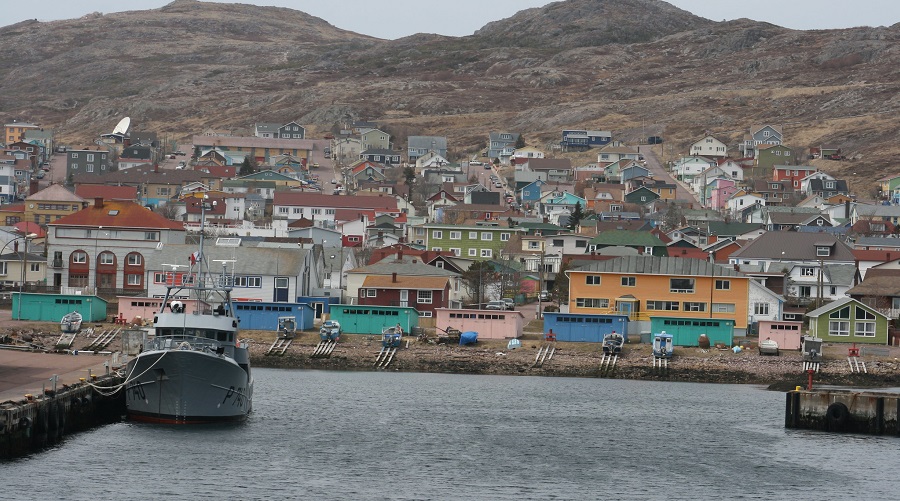
Saint Pierre and Miquelon. Photo by Ian Gratton, Flickr.
Cybium, the International Journal of Ichthyology, recently dedicated a full issue to the aquatic biodiversity and fisheries of Saint-Pierre and Miquelon (SPM), the last French territory in North America, located south-east of Newfoundland, and whose Exclusive Economic Zone (EEZ) is completely surrounded by the EEZ of Eastern Canada.
The special issue is the result of a successful First French-Canadian Aquatic Science Congress, which was held in September 2021 and gathered over 50 researchers and other stakeholders who offered presentations focused on fisheries, aquaculture, participatory science and education, and aquatic biodiversity.
A second congress took place in September 2022 and, together with the initial one, similar events scheduled for the coming years and the scientific papers in Cybium, the goal is to turn the attention of the inhabitants and authorities of SPM back to the ocean and its resources.
The need for this type of effort was identified by SPM-based and other researchers as three decades have passed since the cod stock crashed and the Canadian commercial fishery was put under a moratorium, leading to a collapse of SMP’s fishery-based economy. Since then, people on the archipelago have turned their backs on the sea.
“Given this state of affairs, these contributions are meant to provide the first step towards a better knowledge of the biodiversity of SPM and help in the development of a sustainable fishery and aquaculture sector,” editors Fabrice Teletchea and Daniel Pauly wrote in the issue’s introduction.
The Sea Around Us’ contribution
The marine fisheries catch reconstruction for SPM performed earlier by the Sea Around Us was the key that opened the door for its involvement with the congress and its documentation. Specifically, Dr. Pauly, jointly with the Sea Around Us project manager, Dr. Maria ‘Deng’ Palomares, decided to interpret the catch reconstruction for SPM that the Sea Around Us had published in 2016 in the context of the fisheries catches of the Northwest Atlantic, analyzed and represented at different scales.
These data include catches reported by the Food and Agriculture Organization of the United Nations (FAO), complemented by estimates of discards and catches from commonly overlooked sectors such as artisanal, recreational and subsistence fisheries. The data were used to obtain, at different scales, catch-derived indicators of the status of fisheries in the Northwest Atlantic region from 1950 to 2018, and to perform assessments for 35 stocks (notably of Atlantic cod, Gadus morhua) in FAO Area 21, which encompasses SPM.
The results were the same at all scales, that is, whether one looked at FAO Area 21, covering the entire Northwest Atlantic, the smaller East Canadian Coast ‘Large Marine Ecosystem,’ the even smaller Southern Grand Banks – South Newfoundland ‘Marine Ecoregion’ or SPM’s EEZ: it is cod which drove the fisheries, and its demise, due to intense trawling overfishing, impacted the fisheries similarly at all scales.
As a result, the fisheries of SPM are now concentrating on two groups lower in the food webs, crustaceans, particularly lobster (Homarus americanus), previously preyed upon by large cod, and a sea cucumber (Cucumaria frondosa), which, as phytoplankton and detritus feeder, is at the very bottom of the Northwest Atlantic food webs.
Palomares and Pauly thus, suggest that the management of the fisheries in SPM should focus on rebuilding the stocks of a wide range of species through close cooperation with Canada, so that SPM’s revived artisanal fisheries can, in the future, exploit a variety of fish and invertebrates and not only those at the bottom of the food webs, which have been shown to be very vulnerable to overexploitation.
The Special Issue of Cybium also contains a new, comprehensive list of the fish species occurring in SPM, to which the Sea Around Us’ database manager Dr. Nicolas Bailly contributed, and which confirms that the biodiversity of the sea around SPM could accommodate a diversified artisanal fishery.
See https://sfi-cybium.fr/fr/introduction-issue-cybium-saint-pierre-and-miquelon.

